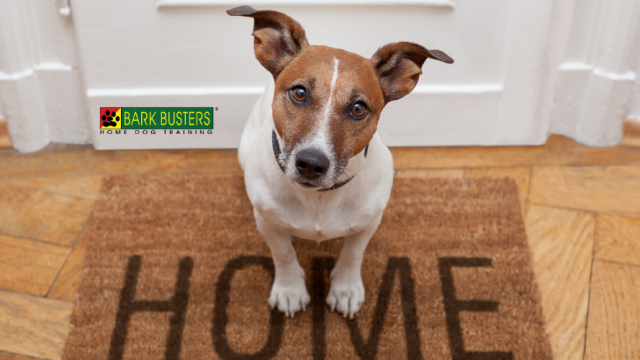Dogs love attention from their humans, no matter what the circumstances: summer vacation, working from home, or social distancing are a dream come true for pups. It means more pets, playing fetch, walks, and treats… and less time alone or confined. In fact, humans often choose times when they are at home more consistently to adopt and rescue pets.
While pet parents may enjoy excess time together as much as their pups, there is a downside: dogs become conditioned to not only like, but to expect their families to be around. Eventually, kids return to school, adults return to work, and dogs return to being alone more often – and do not understand why. This confusion can manifest itself in Separation Anxiety, a complex behavioral issue with negative consequences. If addressed early, however, pooches and parents can save a lot of headaches.
What Does Separation Anxiety Look Like?
Separation Anxiety reveals itself in numerous ways: vocalization (excessive howling and barking), inappropriate toileting, destructive behavior (like chewing and digging), excessive panting, pacing and drooling, and more. I have seen dogs chew through furniture to the wooden frame, literally eat through doors, break teeth off attempting to escape crates, destroy blinds and windowsills, bloody their paws digging at the base of gates… even jump through plate glass windows!
Not all cases are this serious, but even a mild case of Separation Anxiety can be problematic for your dog’s well-being, and there’s no “magic pill” to help. One major contributing factor is “incorrect conditioning” – actions that inadvertently create future problems. Whether welcoming a new addition into your home, or leaving long-time companions alone more often, it is vitally important that your dog become accustomed to, and comfortable with, being left alone.
Practice Makes Perfect
Fortunately, you don’t need to be gone to acclimate your dog to alone time. I advise my clients to practice separation – essentially, to not allow their dogs to be the constant center of attention while humans are home.
Practicing separation can be accomplished in simple ways. For example, set specific times each day to pet and play with your dog. Do not allow your dog to follow you through the house, and teach them to be comfortable some distance away from you or in their own space – perhaps in another room, or in their crate for short periods of time throughout the day, even when you don’t need them to be. These are great ways to ensure that your pup is comfortable without being glued to your hip.
Spending time away from your dog while home may be difficult – we love our canine companions as much as they love us! Practicing basic separation now, however, will set your dog up for success later – and give you both peace of mind when you do have to leave again.
Contact your local trainer for more information on how Bark Busters can help!
A special thank you to Greg Kleva, Master Dog Trainer and Behavioral Therapist in Northern New Jersey for his contributions to this article.
